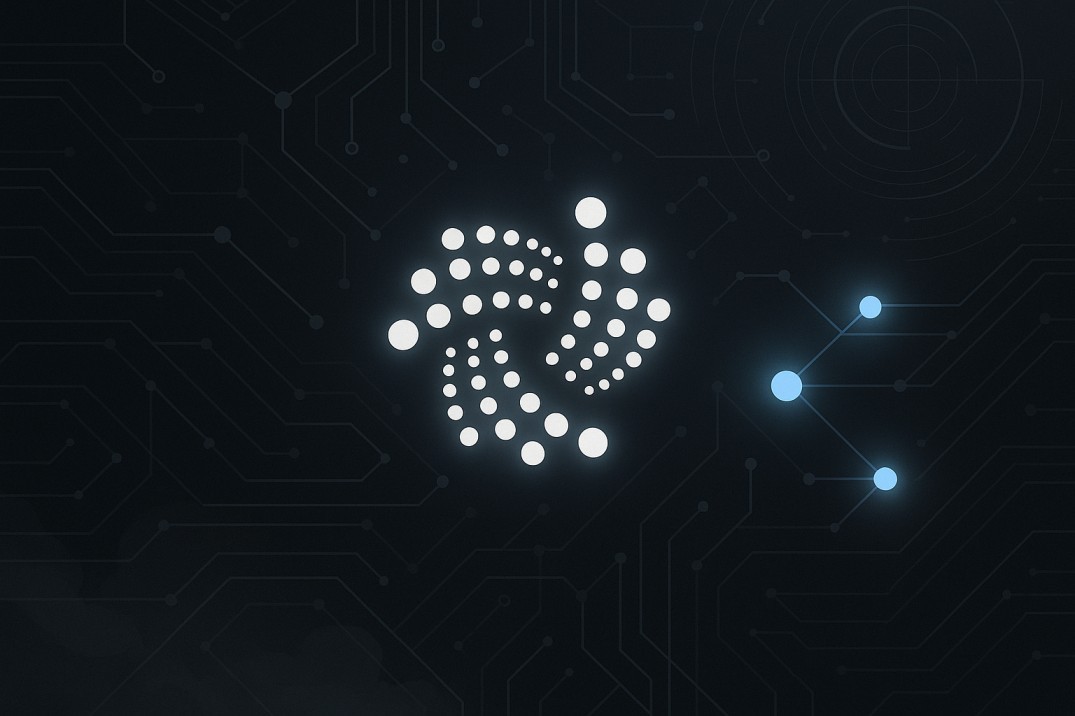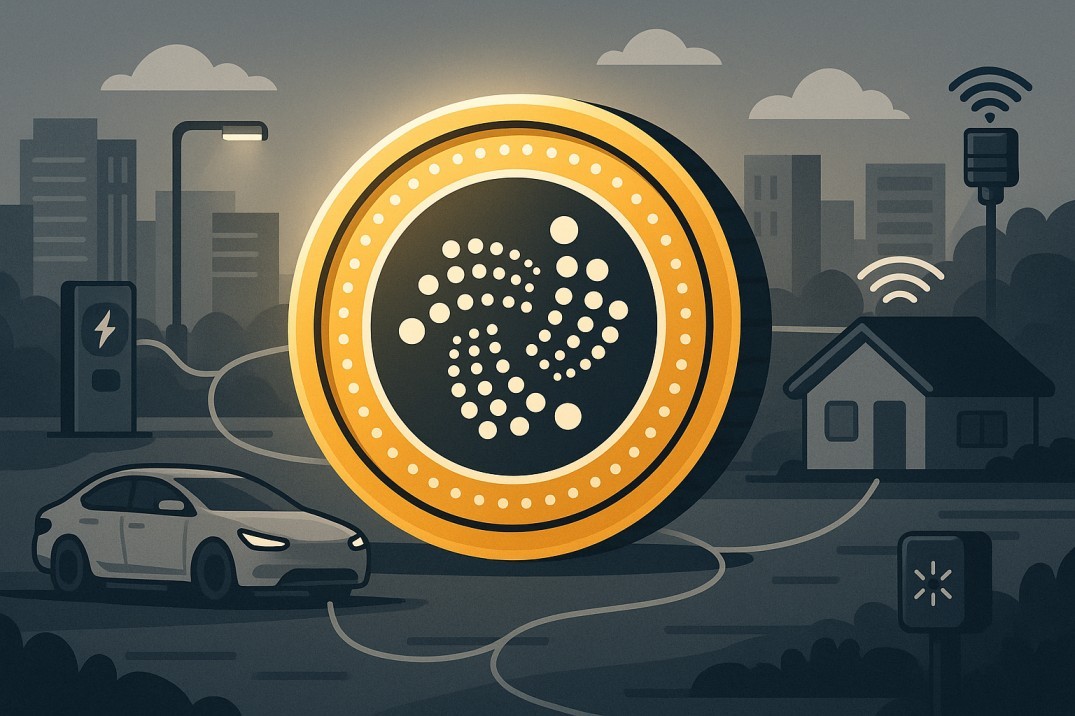TL;DR
- IOTA is a distributed ledger technology (DLT) founded in 2015, built for scalable, low-fee data & value transfer in Web3 & IoT contexts.
- It uses a DAG (Directed Acyclic Graph) structure instead of blockchain, allowing parallel transactions without miners and high throughput.
- Performance: IOTA now supports over 50,000 transactions per second (TPS) and finality in under ~500 ms.
- Key features: no transaction fees (for many use-cases), scalable via parallel txns, real-world or enterprise readiness (tokenization, digital identity, supply chain).
- Challenges include complexity of upgrades, regulatory clarity, developer adoption, balancing inflation vs burn, ensuring decentralization.
IOTA is a distributed ledger technology (DLT) and product suite designed to serve individuals, businesses, and institutions in Web3 and the Internet of Things (IoT). Founded in 2015, its goal is to enable permissionless, near-zero-fee transfers of data and value, especially for use cases involving many small transactions, devices talking to devices, and systems where latency and cost matter.
Instead of "blocks" being batched and validated by miners, IOTA uses a DAG (Directed Acyclic Graph) ledger, often called the Tangle. Each transaction confirms one or more previous transactions, which allows parallel processing and scales with usage. As more transactions are issued, the network becomes more efficient.
What Makes IOTA Unique

Here are what set IOTA apart, especially after its recent evolutionary upgrades:
DAG-Based Architecture & Consensus
The DAG model (Tangle) means there is no need for classic miners or blocks in the same way as Bitcoin or Ethereum. Each transaction helps confirm other transactions. This removes certain bottlenecks. With recent updates, IOTA's consensus mechanism is more robust, supporting leaderless operation and removing dependency on centralized components like the old "Coordinator."
MoveVM Integration & Smart Contract Capability
IOTA has introduced native support for the Move virtual machine (MOVE), a language designed for security, predictable behavior, and flexible asset models. It also maintains compatibility with EVM (Ethereum Virtual Machine) via L2s or chains to help developers migrating from Ethereum. These allow dApps, digital assets, and tokenization to flourish on IOTA.
Tokenomics: Supply, Inflation, Burn, & Staking
IOTA Rebased brings changes to how the token works economically. The current supply is dynamic: new tokens are minted each epoch (roughly daily) for staking rewards, but a portion of compute/transaction fees get burned. Over time, this mechanism aims to balance inflation and burn to keep supply movements healthy.
Storage deposits: when users store persistent data, they deposit tokens; when data is removed, the deposit is refunded. This encourages efficient on-chain storage.
Performance & Finality
IOTA can now handle 50,000+ TPS with finality under ~500ms in many cases. The network's recent enhancements make confirmation speed fast, especially important for IoT flows, real-time systems, supply chain, etc. In testing on scaled setups (for example in PCP testing across many Tangles) IOTA has hit ~90,000 confirmed TPS.
How It Works
Putting it all together, here's how IOTA operates from transaction to smart contract and real-world use:
- A user or device creates a transaction. Because of the DAG, that transaction must confirm some previous ones (helping build consensus).
- Transactions are processed without traditional fees in many cases, because there is no need for miners to be paid-this is part of what makes IOTA efficient.
- For smart contracts and more complex applications, IOTA uses MoveVM, and supports EVM-compatibility on chains or via anchoring, enabling developers familiar with those tools to build on IOTA.
- Storage of data, tokenization, identity systems and similar applications use new ledger features: refundable storage deposits, asset token standards, verifiable credentials, attribute-based claims.
- Token holders can stake IOTA for validation, governance participation, and earning rewards.
Real-World Use & Use Cases

IOTA is built with real-world applications in mind, and its architecture lends itself to industries that demand speed, scalability, and low costs.
In supply chain management, IOTA enables traceability by recording product movement and data directly on its ledger. This allows companies to verify the origin of raw materials, track shipments, and prove authenticity — all without adding expensive transaction fees.
In sustainability initiatives, IOTA supports systems like Digital Product Passports, where environmental and lifecycle data can be verified and shared. This is particularly relevant for compliance with new regulations in Europe and beyond. For government and public sector pilots, IOTA has been used for purpose-bound money experiments, enabling funds to be locked to a specific purpose, such as education subsidies or sustainability grants, ensuring transparent use of resources.
In tokenization and digital assets, IOTA enables the creation of native assets directly on its ledger, making it possible to tokenize rights, carbon credits, event tickets, or intellectual property with minimal friction. IOTA is also making strides in identity and credentials, offering decentralized identifiers (DIDs) and verifiable credentials that allow users and organizations to prove attributes (like age, certification, or origin) in a privacy-preserving way.
These use cases show that IOTA is being built as a practical foundation for industries that need performance, scalability, and trust.
Challenges & Risks
Even with many strong technical foundations, IOTA faces nontrivial challenges:
Upgrade Complexity: Moving to IOTA Rebased, integrating MoveVM, adding L1 smart contracts, shifting governance-all complex tasks that must avoid bugs or unintended centralization.
Developer Ecosystem & Tooling: For widespread adoption, devs must find it easy to build tools, debug, deploy, integrate. EVM compatibility helps, but MoveVM and new models need robust support.
Regulatory Clarity: In different regions, privacy, identity, tokenization, and asset rules vary. Use cases involving "purpose-bound money", data provenance or credential verification may run into legal/regulatory constraints.
Supply & Inflation Balancing: Because IOTA Rebased introduces inflation for staking rewards and burns via usage, the net effect on token supply depends heavily on how much the network is used. If burn is low or usage lags, inflation could erode value or incentives.
Decentralization & Security: Ensuring that no small set of validators / nodes dominate, that the consensus remains resilient, that governance is transparent-and that economic incentives align with network health.
Why IOTA Matters
IOTA is among the few projects that blend several advanced technologies (DAG, MoveVM, EVM compatibility, identity/data tokenization) with a strong view toward real-world use (IoT, supply chain, sustainability). In a Web3 world that increasingly demands not just decentralization but performance, low cost, data sovereignty, and programmability, IOTA is well positioned.
It's not perfect, and its path forward includes significant technical & cultural work, but its upgrades show clarity in vision. For anyone interested in building or using systems where speed, traceability, privacy of assets/data, and seamless interactions of devices matter- IOTA is a protocol worth knowing.
Final Thought
IOTA is trying something others haven't done: combining feeless, high-throughput distributed ledgers with programmability and strong real-world credentials. The shift with IOTA Rebased is more than a technical refresh-it's the kind of evolution that can move IOTA from niche experiments to foundational infrastructure.
If IOTA can deliver on its vision-robust distributed DAG consensus, effective MoveVM smart contracts, and balanced tokenomics-it may become a backbone for IoT, supply chains, identity, and asset tokenization in Web3. But it needs broad adoption, solid developer tools, reliable performance, and governance that stays true to its promise.
ALSO READ: No More Front-Running: Why COTI V2 Might Just Save DeFi











